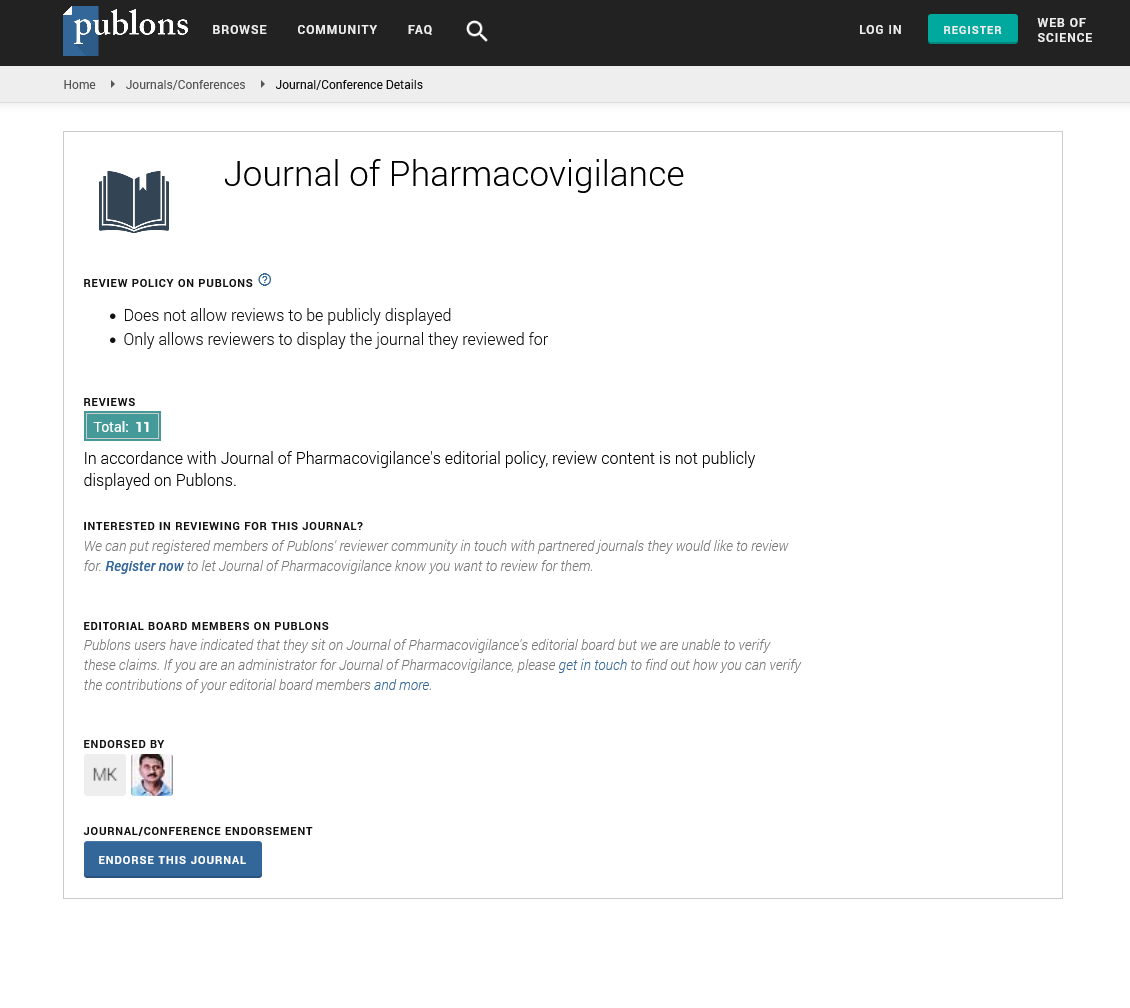Indexed In
- Open J Gate
- JournalTOCs
- The Global Impact Factor (GIF)
- RefSeek
- Hamdard University
- EBSCO A-Z
- OCLC- WorldCat
- Publons
- Euro Pub
- Google Scholar
Useful Links
Share This Page
Journal Flyer

Open Access Journals
- Agri and Aquaculture
- Biochemistry
- Bioinformatics & Systems Biology
- Business & Management
- Chemistry
- Clinical Sciences
- Engineering
- Food & Nutrition
- General Science
- Genetics & Molecular Biology
- Immunology & Microbiology
- Medical Sciences
- Neuroscience & Psychology
- Nursing & Health Care
- Pharmaceutical Sciences
Commentary - (2023) Volume 11, Issue 1
Analysis of Drug Abuse and Different Drug Testing Methods
Argeriou Miller*Received: 01-Jan-2023, Manuscript No. JP-23-19791; Editor assigned: 03-Jan-2023, Pre QC No. JP-23-19791(PQ); Reviewed: 17-Jan-2023, QC No. JP-23-19791; Revised: 24-Jan-2023, Manuscript No. JP-23-19791(R); Published: 31-Jan-2023, DOI: 10.35248/2329-6887.23.11.410
Description
Drug tests are done for both medical and legal reasons, such as workplace drug testing. Testing may be done to detect illegal drug use or to monitor drug use. The recent increase in the number of pain management and opioid addiction clinics has significantly increased the demand for urine drug testing. Urine is the sample of choice because it contains appropriate concentrations of the drug and its metabolites and is easily collected. Because urine drug screening is used for different purposes and patient populations, the selection of appropriate cut-off values is very important.
In drug testing and legal drug testing tests are often performed in hospital clinical laboratories to confirm the presence of drugs in urine samples from people admitted to the emergency room with a suspected drug overdose. In addition, doctors may do urine tests to confirm that people are taking opioid pain relievers or benzodiazepine therapy.
Drug testing can be performed in hospital laboratories using automated analyzers and U.S. Food and Drug Administration (FDA) approved immunoassays, or in physician’s offices using appropriate FDA-approved point-of-care devices. Drugs of abuse can be detected in either blood or urine. Where performance and behavioral impairment due to drug use is important. Analysis of blood or plasma samples becomes essential in drugimpaired driving situations. Being under the influence of a drug requires some knowledge of brain exposure to psychoactive substances, and blood or plasma concentrations are therefore the best approximations. Due to its significantly longer window, it is the preferred liquid for monitoring and controlling drug abstinence.
Immunoassays are used in clinical laboratories to analyze a variety of specimens, including hormones, serum proteins, and antibodies to infectious or allergenic agents, to monitor therapeutic drugs and test for drugs of abuse. These immunoassays are highly sensitive and have a wide analytical range. In the early days of immunoassays, the method was tedious and required skilled workers. However, innovative developments in immunoassay automation over the past two decades have created rapid and effective methods for analyze, with over 100 commercially available immunoassays.
Urinary Drug Screening (UDS) is commonly used to assess abuse potential and adherence in pain patients receiving opioid therapy. American Pain Society (APS) and American Academy of Pain Medicine (AAPM) Clinical Consensus Guidelines recommend those high-risk patients or those with Aberrant Drug- Related Behaviors (ADRB) (strong recommendation, low-quality evidence) and low-risk patients (weak recommendation, lowquality evidence) undergo her UDS regularly doing. Numerous studies have shown that a significant percentage of patients receiving prescription opioids have abnormal UDS. In psychiatry, drug testing is a supplement to addiction and behavioral counseling. Drug testing can detect initial drug use during rehabilitation or confirm continued drug use. Drug testing in pain management documents compliance and prevents drug diversion in patients taking controlled substances. Post-accident investigation and evaluation of reasonable or questionable workplace behavior is routine practice for private sector, military, and federal personnel. Universal random drug tests are mandatory for security and highly sensitive public safety officers. Random drug tests are also mandated in the prison justice system.
Conclusion
Drug testing on urine samples is the most common, but alternative samples such as hair and oral fluids are gaining popularity for legal drug testing. Typically, for both medical and legal drug testing, initial screening of urine samples is performed using commercially available immunoassays. If the initial screen is positive, the individual drug or drug class should be confirmed by alternative methods. The most common method is Gas Chromatography-Mass Spectrometry (GC-MS) for all legal drug tests. Initial screening of samples by immunoassay is a rapid and effective method to determine the presence of a drug or class of drugs in a sample, but immunoassays suffer from cross-reactivity with structurally related compounds, false positive drug tests are common in immunoassays.
Citation: Argeriou M (2023) Analysis of Drug Abuse and Different Drug Testing Methods. J Pharmacovigil. 11:410.
Copyright: © 2023 Argeriou M. This is an open-access article distributed under the terms of the Creative Commons Attribution License, which permits unrestricted use, distribution, and reproduction in any medium, provided the original author and source are credited.

